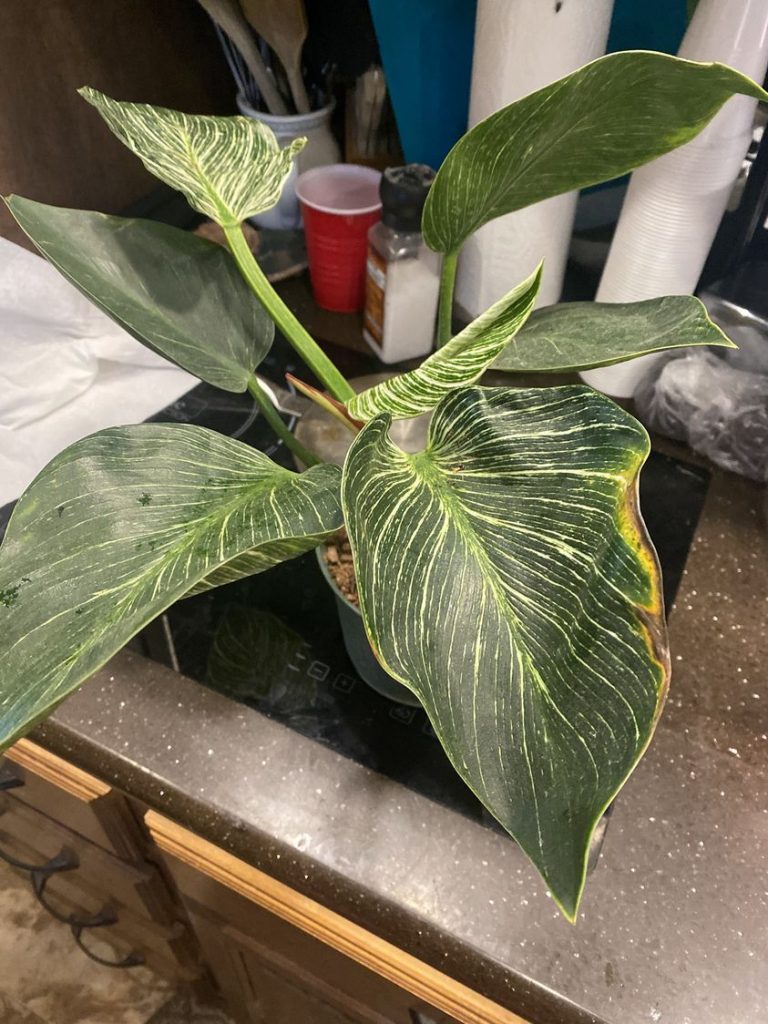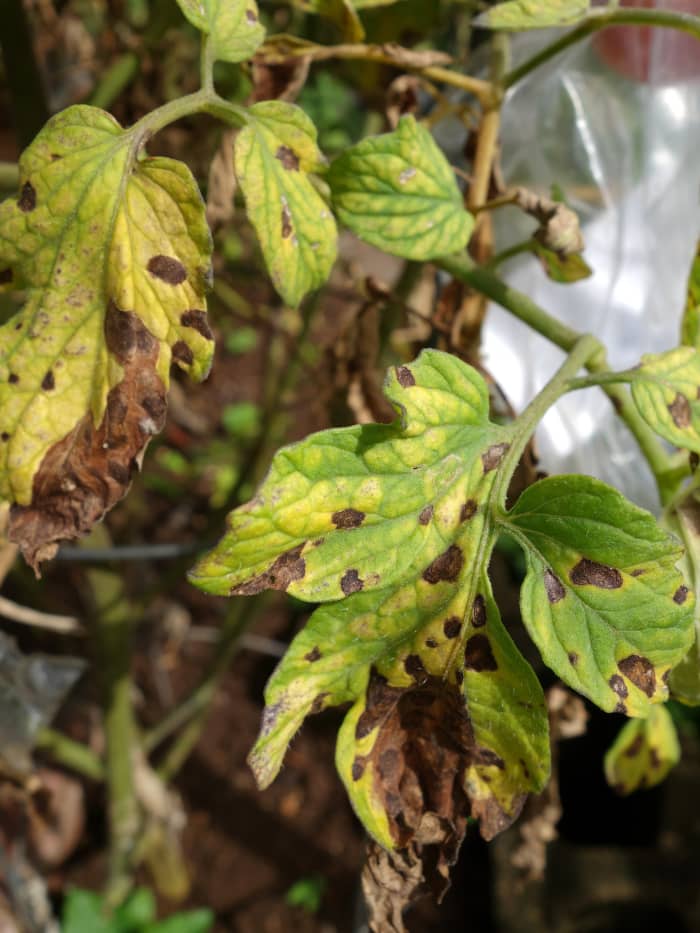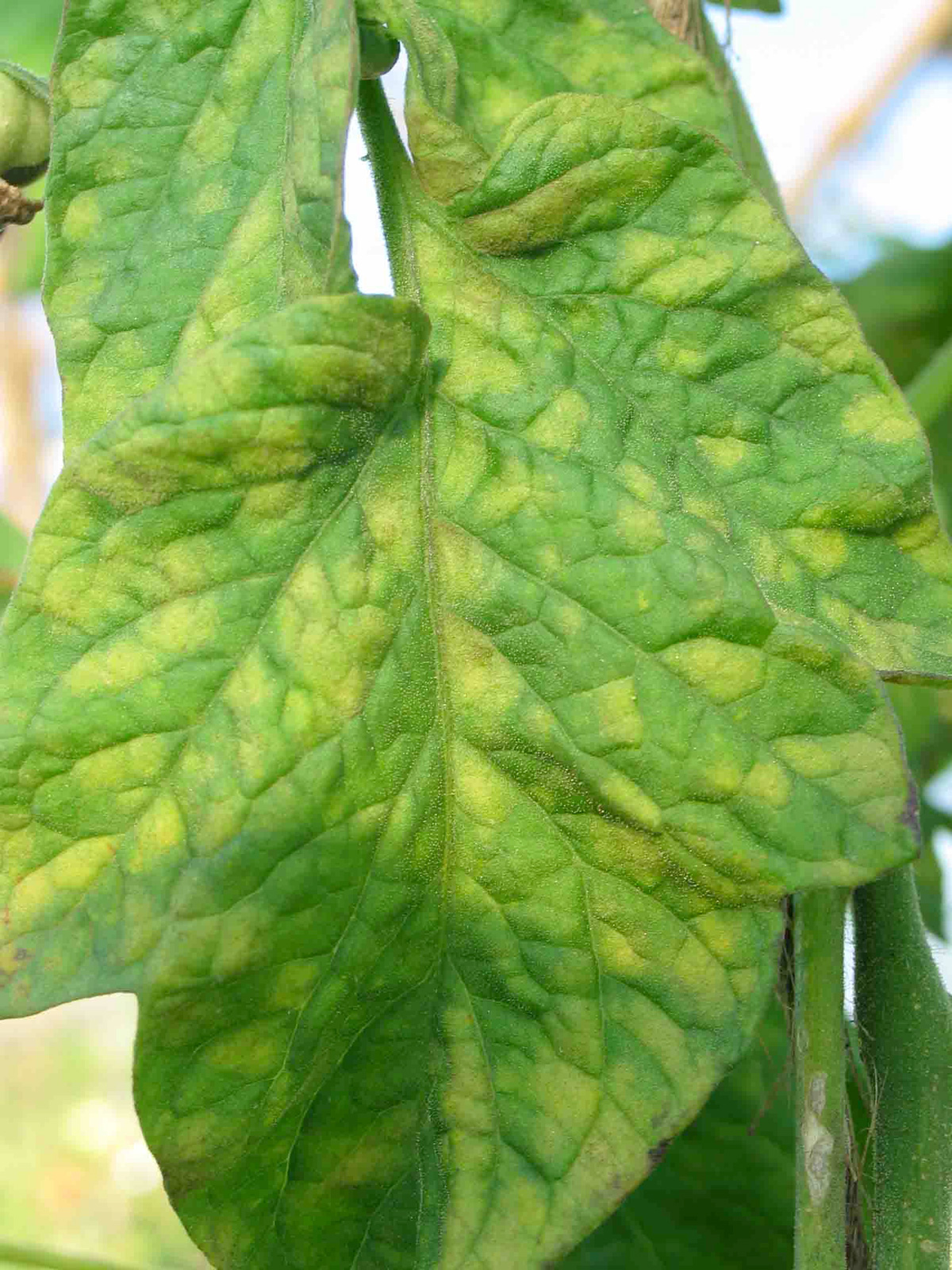This time, we’re going to talk about Tomato Plants Turning Yellow With Brown Spots. There is a lot of information about 10 Reasons Why Tomato Plant Leaves Turn Yellow on the internet, of course. Social media are getting better and better quickly, which makes it easier for us to learn new things.
Why Are My Tomato Leaves Turning Yellow With Brown Spots and tomato leaves turning yellow with brown spots are also linked to information about tomato plant leaves turning yellow with brown dots. As for other things that need to be looked up, they are about tomato leaves turning yellow with brown spots and have something to do with Young Tomato Plant Leaves Turning Yellow.

20 Interesting Facts Tomato Plants Turning Yellow With Brown Spots | Young Tomato Plant Leaves Turning Yellow
- You don’t need to be too worried as long as your plant is still getting new growth; snip away the yellowing leaves. Removing them will let the plant focus on new growth and recover much faster from transplant shock. Read more about when to transplant tomato seedlings outdoors. - Source: Internet
- This fungal disease is widespread in tomato plants and is generally caused by the fungus Alternaria solani. Early blight is always a threat to anyone growing tomatoes as it hangs out in the soil, and if the conditions are right, hot and humid, it will attack your plants. This nasty fungus can affect the leaves, stems, and fruit of your tomato plant to the point that it kills it. - Source: Internet
- Change up the location of your plants every years. This will ensure that pests and disease don’t become established in the soil and that the soil doesn’t become depleted of certain nutrients. Tomato plants are commonly rotated on a 4-year cycle (which works very well if you have four raised beds to move them around from year to year). Give them space. Not crowding your tomato plants together will give them good air circulation and help to keep the foliage dry and disease-free. - Source: Internet
- The other end of the spectrum may be that you have underwatered your tomato. If the leaves turn yellow on the edges and then fall off, and you know you have missed a watering session or two, you have your answer. Tomato plants do not like to dry out and will begin to wilt at the first signs of overly dry soil. - Source: Internet
- Tomato plant leaves often turn yellow due to common garden maintenance issues including overwatering, underwatering, transplant shock, soil nutrient deficiencies, and compacted garden soil. Yellowing leaves can also be a symptom of common fungal diseases including blight or leaf spot, as well as of pest pressure from insects, mites, and/or nematodes. The good news is that the affected leaves can generally be easily removed and the newer leaves that replace them are much more likely to stay green if the root cause of the yellow leaves is addressed. - Source: Internet
- These are tiny worms that affect the root system of your tomato plants. You won’t see them since they affect the roots of your plants, but some signs that root-knot nematodes are destroying your plants are yellowing leaves, wilting leaves, and stunted growth. They cause swelling and growths that look similar to knobs on the roots (root galls). - Source: Internet
- Start treatment by immediately removing and disposing of the affected leaves off the bottom of the plant. Then spray the plant with a natural fungicide like Bonide Tomato & Vegetable, being sure to spray the undersides of the leaves and the stems. Also, check to ensure plants have adequate air circulation and surface mulch while also pulling out weeds and avoiding watering the leaves of the tomato plant. - Source: Internet
- Spider mites are tiny little insects that you may not be able to see, but you will notice their webbing on your tomato plant; eventually, the leaves will turn yellow and drop off the plant. Spider mites will kill your tomato plant if not treated quickly and properly. They are relatively easy to ward off. Keeping your plants watered and fertilized properly will make them much more resistant to a spider mite infestation. - Source: Internet
- If the soil around your tomato plant becomes too compacted, it will cut off the oxygen, water, and nutrients to your plant, and it will begin to suffocate. Telltale signs will be yellowing leaves and packed down the soil. This can happen from not using good soil with organic matter to help keep it aerated and from walking on the soil too much. - Source: Internet
- There are so many seeds available that are disease resistant and can help better the chances of healthy plants. Keep in mind that these plants are disease resistant but can still be infected if preventative measures and proper gardening practices are not implemented. Assess plants regularly. Performing regular assessments on your tomato plants will help you catch a problem and treat it before it kills the plant or spreads to your other plants. - Source: Internet
- The problem with overwatering all the time is that it could lead to root rot, especially in climates where the soil is quite moist naturally. If there is too much water in the soil, it can suffocate the plant’s roots, cutting off the oxygen supply to the leaves, which will cause them to turn yellow and drop off. Saturated soil has few/no air pockets available to the roots. It is common to see ponded water on top of the soil (especially in clay soil). - Source: Internet
- Unlike early blight, late blight prefers cool, damp weather. It will show up on your tomato plants on the stems as hard, dark brown areas that have rounded edges. If it moves to the fruit, they will develop dark brown spots; eventually, secondary infections will set in, and the fruit will turn mushy. - Source: Internet
- Performing regular assessments on your tomato plants will help you catch a problem and treat it before it kills the plant or spreads to your other plants. Wait for the ground to warm up. After a string of warm days, it is tempting to get your plants in the ground and kick off your garden. Resist the urge if the temperature is still dropping at night. Planting your tomatoes in cold soil may make them more susceptible to diseases and stunt their growth. - Source: Internet
- For the fastest-acting nutrient input, use a water-soluble or liquid concentrate organic tomato fertilizer like True Organic Liquid Tomato & Vegetable Plant Food. You can also use a slow-release granular tomato fertilizer for the longer term, such as Dr. Earth Organic Tomato Fertilizer. Lastly, a nice surface mulch of organic compost will provide a natural nutrient boost for your plants. - Source: Internet
- Fungal diseases are another common cause of yellowing leaves on tomato plants. Various fungus-caused plant diseases include blights and leaf spots. Fungal disease in general can be counteracted by ensuring lots of air circulation around the plants, using an organic surface mulch, pulling out weeds while they’re still small, and avoiding overhead watering. - Source: Internet
- Yellowing leaves are typical for tomato plants with nutrient deficiency. Generally, when your tomato plant lacks nutrients, it is nitrogen that is to blame. Having adequate nitrogen is crucial for leaf production and an overall healthy plant. If you notice the older leaves turning yellow and the plant has stopped growing, it is likely that not enough nitrogen is the culprit. If you’re not really sure, you could always perform a soil test to get a good profile of the nutrients in your soil and what it may be lacking. - Source: Internet
- Not crowding your tomato plants together will give them good air circulation and help to keep the foliage dry and disease-free. Water properly. Assess regularly how your plants are doing in terms of water. Is the soil always wet, or does it seem to be dry shortly after you water? Another thing to consider is the time of day when you are watering your tomato plants. Giving them a good drink in the morning will help them dry out before the sunsets. - Source: Internet
- Start treatment by immediately removing and destroying all affected tissue. Be sure to remove any affected tomatoes off the plant. Then spray the remaining leaves and stems with an organic fungicide. - Source: Internet
- Watering your tomato plant is crucial for a happy, healthy, and productive plant. Usually, if it’s a watering problem, it’s overwatering that is the issue. This can take the form of watering too much too often, or letting the plant dry out and then giving it an “extra-large” watering all at once. Neither scenario is optimal, as tomato plants grow best with a consistent soil moisture level in which the soil contains both moisture and air pockets. - Source: Internet
- Caused by the fungus Septoria lycopersici, it is likely to affect tomato plants, as well as other plants in your garden in hot and humid weather. It starts on the underside of the lower leaves of your tomato plants. The infection begins as a small dark brown spot with a lighter-colored center and a yellow outline around the whole area. - Source: Internet
 Here are a few tips to help you find information about What Causes Yellow Spots On Tomato Leaves:
- Look for good places to get information about Bottom Of Tomato Plant Turning Yellow. This can be done in libraries, on websites, or even by paid journalists.
- When looking for information about Bottom Of Tomato Plant Turning Yellow, it's important to know that there are different kinds of online sources, like Google and YouTube. Social media sites like Facebook and Twitter are also good places to look for information about 10 Reasons Why Tomato Plant Leaves Turn Yellow.
Here are a few tips to help you find information about What Causes Yellow Spots On Tomato Leaves:
- Look for good places to get information about Bottom Of Tomato Plant Turning Yellow. This can be done in libraries, on websites, or even by paid journalists.
- When looking for information about Bottom Of Tomato Plant Turning Yellow, it's important to know that there are different kinds of online sources, like Google and YouTube. Social media sites like Facebook and Twitter are also good places to look for information about 10 Reasons Why Tomato Plant Leaves Turn Yellow.Video | Tomato Plants Turning Yellow With Brown Spots
To get the best information about 10 Reasons Why Tomato Plant Leaves Turn Yellow, you should read to find out how true each source is.
This article has a few videos from different places about Treatment For Yellow Leaves On Tomato Plants that will help you learn more about it. The Internet is a great place to find out about a wide range of things.
## Here are some crucial points concerning tomato leaves turning yellow with brown spots:- Tomato Plants Turning Yellow With Brown Spots
- Tomato Leaves Turning Yellow With Brown Spots
- Tomato Plant Leaves Turning Yellow With Brown Dots
- Why Are My Tomato Leaves Turning Yellow With Brown Spots
- What Causes Yellow Spots On Tomato Leaves

With so many websites and forums that talk about Tomato Plant Leaves Turning Yellow And Curling, it shouldn’t be hard to find what you need.
Most people are used to getting information about tomato plant leaves turning yellow with brown dots in a very different way than this. It lets you look at the information about Tomato Plant Leaves Turning Yellow And Curling and how it can be used in more detail.
 ways to put information about Young Tomato Plant Leaves Turning Yellow in a way that looks good and is useful. They can be used in business and marketing, and they can also be used to talk about 10 Reasons Why Tomato Plant Leaves Turn Yellow. So, we also give you some pictures about tomato plant leaves turning yellow with brown dots.
ways to put information about Young Tomato Plant Leaves Turning Yellow in a way that looks good and is useful. They can be used in business and marketing, and they can also be used to talk about 10 Reasons Why Tomato Plant Leaves Turn Yellow. So, we also give you some pictures about tomato plant leaves turning yellow with brown dots.
In the end, this article gives a summary of Tomato Plant Leaves Turning Brown And Curling. Also talked about are tomato plants turning yellow with brown spots and 10 Reasons Why Tomato Plant Leaves Turn Yellow, which you can use to compare how much you know about Tomato Plant Leaves Turning Yellow And Curling.